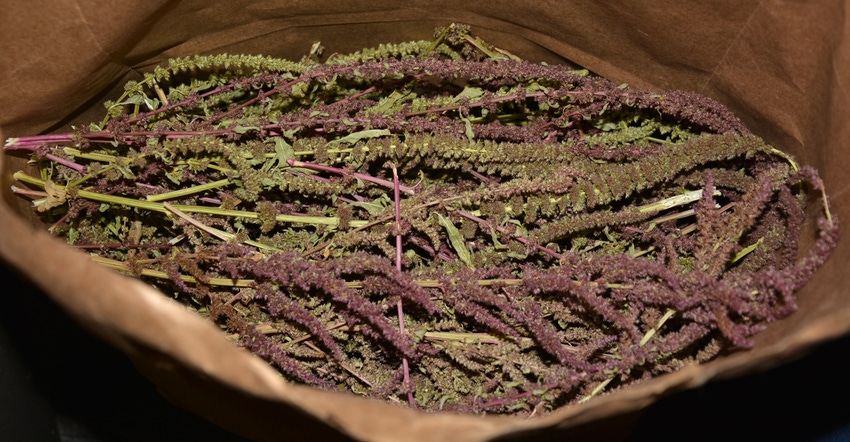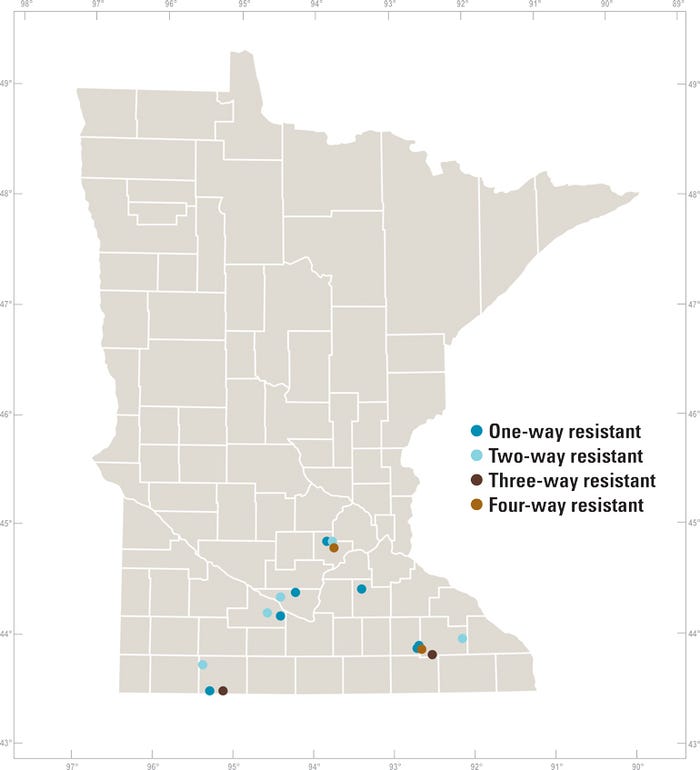October 11, 2021

University of Minnesota Extension weed scientists are asking farmers to participate in another weed survey.
Debalin Sarangi, U-MN Extension weed scientist, and graduate student Navjot Singh in an Oct. 5 blog shared results from a 2020 weed survey and asked that growers collect and submit weed seeds again this season.
In 2020, the scientists received about 30 waterhemp samples, mostly from southern Minnesota. They grew them in the greenhouse and conducted resistance screening. They found that the majority of waterhemp populations were resistant to ALS-inhibiting herbicides (e.g., Pursuit, Raptor and Classic) and glyphosate.
They reported that the results also showed that 14% and 15% of waterhemp populations were resistant to atrazine and PPO inhibitors (e.g., Flexstar), respectively. If at least 40% of plants survive a 3X labeled dose of a certain herbicide, that population is considered to be resistant.
The researchers noted that two populations from Carver and Olmsted County showed resistance to four herbicide sites of action, significantly reducing herbicide choices for farmers. These populations survived the 3X application of glyphosate, Raptor, Atrazine, and Flexstar or Callisto (a HPPD inhibitor).

In three populations, 7% to 14% of waterhemp plants have survived the 3X dose of 2,4-D-choline (Enlist One), showing that the less-sensitive individuals to 2,4-D are present in Minnesota. Given the results, growers are advised to take a diversified management approach to slow down the resistance evolution.
Seed samples requested
Sarangi and his team are again collecting weed seed samples this year. They ask that growers follow the steps given for sample collection and submission:
Select the fields with lower-than-expected weed control from herbicide applications. Avoid sampling plant escapes due to lack of spray coverage.
Collect the seed heads from at least 10 mature (black color seeds) female waterhemp plants or 20 mature (brown seeds) ragweed plants and place the samples in paper bags. Do not mix the seeds of different species; bag them separately.
Fill out the 2021 Herbicide-Resistant Waterhemp/Ragweeds Survey and send it along with the samples.
Mail the samples directly to the University of Minnesota’s St. Paul campus: Attn: Debalin Sarangi, 411 Borlaug Hall, 1991 Upper Buford Circle, St. Paul, MN 55108.
Samples may also be submitted to local Extension educators in crops.
For questions, contact Sarangi at [email protected]
Source: University of Minnesota Extension, which is solely responsible for the information provided and is wholly owned by the source. Informa Business Media and all of its subsidiaries are not responsible for any of the content contained in this information asset.
You May Also Like




